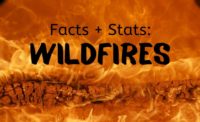Disaster Restoration
Australian Bushfire Facts | January 2020

While news of the Australian wildfires (or bushfires) is evolving and changing every moment, there are some baseline things to know to better understand the scope of the fires.
What areas are affected?
So far there have been fires in every Australian state, but New South Wales (NSW) has been the hardest hit. Some of the country's largest cities, like Melbourne and Sydney, have also been affected, with homes in the outer suburbs damaged by fire and heavy smoke. More than a month ago, Sydney's air quality was 11 times the "hazardous" level; just imagine what it is today.
Just as the Western U.S. goes through rainy and dry seasons, and certain times of year are more prone to wildfire outbreaks, Australia also has a "fire season."
How did they start?
In early January, 24 people were charged with intentionally setting the fires. All together, more than 180 people face some kind of legal action related to the bushfires. However, this doesn't mean the fires were all intentionally set. The Victoria Emergency state agency said fires in their East Gippsland region were started by multiple lightning strikes, as were many others.
Australia's Bureau of Meteorology said the country is in one of its worst droughts in decades, coupled with some a massive heatwave. In December, the country set a new record for highest nationwide average temperature - with some places averaging between 113 and 120 degrees Fahrenheit. Heat, lack of rain, and windy conditions have helped the fires grow to massive proportions.
To add to the existing weather-related issues, these fires are now so massive they are interactive with the atmosphere and creating their own weather. This includes fire-driven thunderstorms, fire clouds, and lightning. The Bureau of Meteorology describes fire clouds as enormous formations that can spread fires "by driving strong winds, generating lightning, and lofting burning fragments - a phenomenon sometimes call an ember attack".These clouds also funnel smoke and tiny aerosol particles into the lower stratosphere, which affects air quality in a similar way as volcanic eruptions.
What is the the damage - so far?
Obviously some of this information won't stay current very long. But as of Tuesday, Jan 7, 24 people and more than 500 million animals have died. Plus, an estimated 2,000 homes have been destroyed - and thousands more damaged. Again, NSW has been the hardest hit.
Insurers have so far received six thousand bushfire-related claims since September, valued at about $300 million dollars. Obviously, this is just the tip of the iceberg, as analysts project the crisis could exceed $485 million in the coming months. Plus, forecasters believe the fires could continue to burn for months.
What's next?
Understanding how to help those affected by the bushfires is critical. Australia will likely need a lot of help rebuilding once the fires are out. A starting point is understanding the impact bushfires and wildfires have on structures compared to a "normal" structure fire.
Looking for a reprint of this article?
From high-res PDFs to custom plaques, order your copy today!






